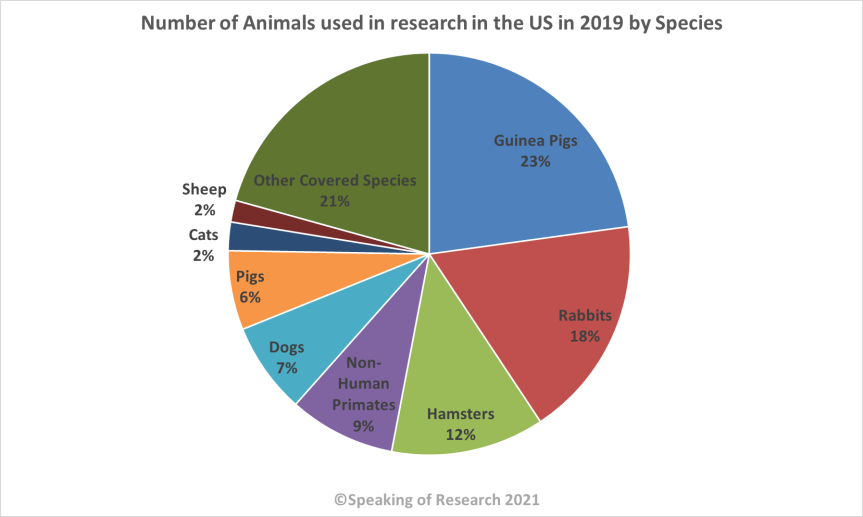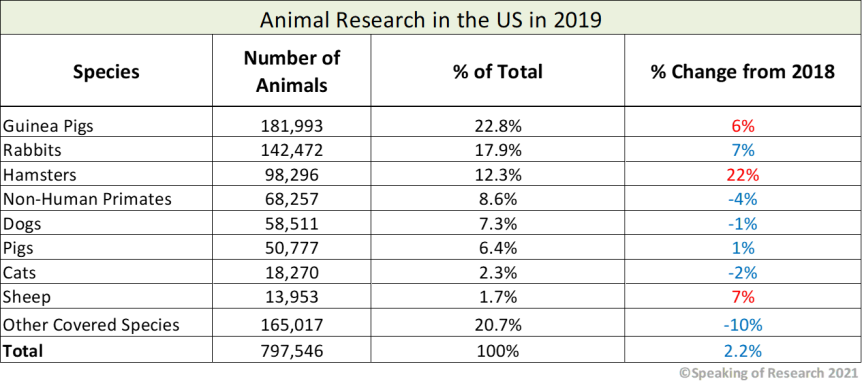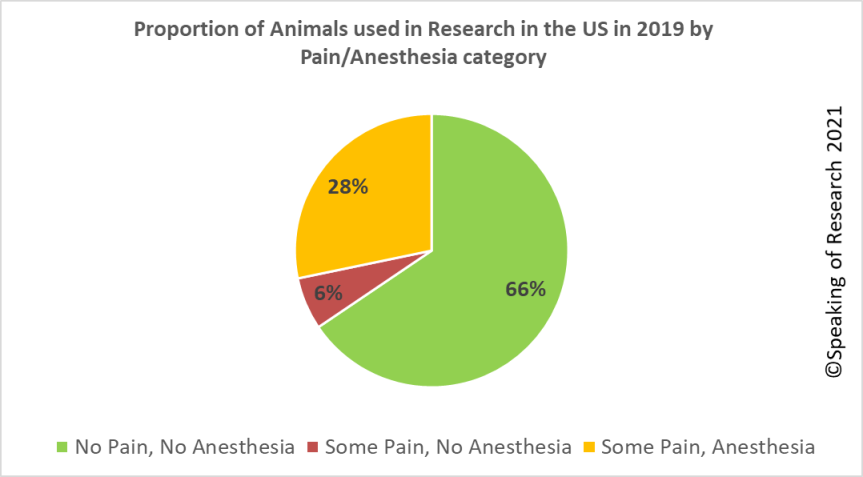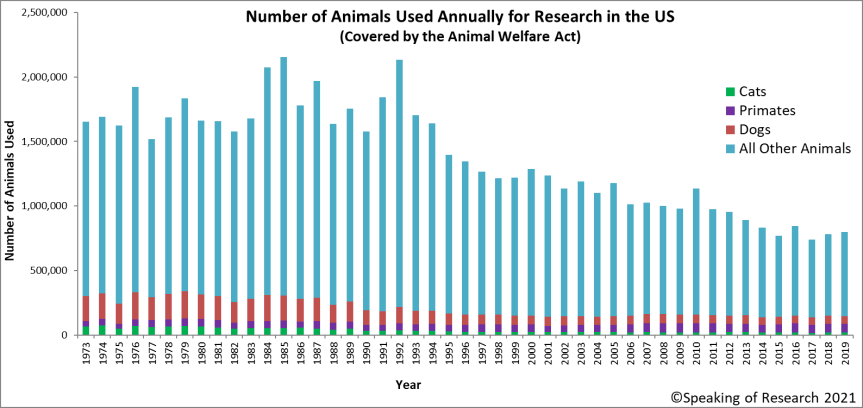In 2019, US government statistics put the number of laboratory animals used in research at 797,546, an increase of 2.2% from 2018. This includes both public and private institutions. These statistics do not include all animals as most mice, rats, and fish are not covered by the Animal Welfare Act – though they are still covered by other regulations that protect animal welfare. We also have not included the 137,225 animals which were kept in research facilities in 2019 but were not involved in any research studies.

The statistics show that 53% of research is on guinea pigs, hamsters and rabbits, while 10% is on dogs or cats and 9% on non-human primates. In the UK, where mice, rats, fish and birds are counted in the annual statistics, over 96% of research is on rodents, birds and fish. Across the EU, which measures animal use slightly differently, 93% of research is on species not counted under the Animal Welfare Act (AWA). If similar proportions were applied the US, the total number of vertebrates used in research in the US would be between 12 and 24 million, however, there are no published statistics to confirm this. Given the assumptions made above on the number of other species used, it is likely that dogs, cats and non-human primates together account for 1% or less of the animals used in research every year.

Of the animal species covered under the Animal Welfare Act, 66% were involved in experiments where they experienced no pain and therefore no anesthesia was required, 28% were involved in procedures where they experienced some pain and/or required anesthesia and 6% of all animals experiences some pain but no anesthesia was provided because it would interfere with the experimental purpose.

Government statistics show that the use of non-rodent animals has been declining over the past two decades. Since 1985 the use of animals has more than halved in the US. This includes a decrease in the number of dogs from over 200,000 in 1979, to around 58,000 in 2019. Some of this decrease is likely to reflect a movement towards the use of genetically modified mice.

Let us put the number of animals used in perspective. Scientists in the US use approximately 12-24 million animals in research, of which only less than 1 million are not rats, mice, birds or fish. We use fewer animals in research than the number of ducks eaten per year in this country. We consume over 1800 times the number of pigs than the number used in research. We eat over 340 chickens for each animal used in a research facility, and almost 9,000 chickens for every animal used in research covered by the Animal Welfare Act. For every animal used in research, it is estimated that 14 more are killed on our roads.
USDA Annual Reports on Animal Usage in Research:
- 2018 USDA Annual Report on Animal Usage in Research
- 2017 USDA Annual Report on Animal Usage in Research
- 2016 USDA Annual Report on Animal Usage in Research
- 2015 USDA Annual Report on Animal Usage in Research
- 2014 USDA Annual Report on Animal Usage in Research
- 2013 USDA Annual Report on Animal Usage in Research
- 2012 USDA Annual Report on Animal Usage in Research
- 2011 USDA Annual Report on Animal Usage in Research
- 2010 USDA Annual Report on Animal Usage in Research
- 2009 USDA Annual Report on Animal Usage in Research
- 2008 USDA Annual Report on Animal Usage in Research
- 2007 USDA Annual Report on Animal Usage in Research
- 2006 USDA Annual Report on Animal Usage in Research
- 2005 USDA Annual Report on Animal Usage in Research
- 2004 USDA Annual Report on Animal Usage in Research
- 2003 USDA Annual Report on Animal Usage in Research
- 2002 USDA Annual Report on Animal Usage in Research
*If you have the 2007 report, please contact us. All reports before 2007 include species totals for all years back to 1973.
